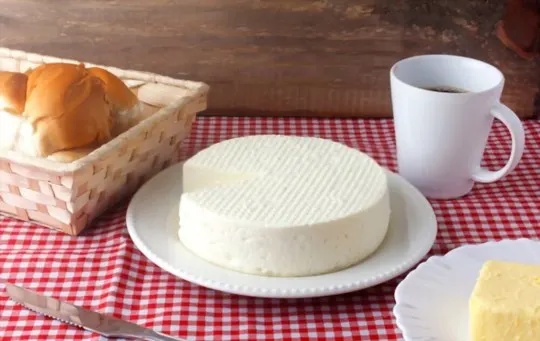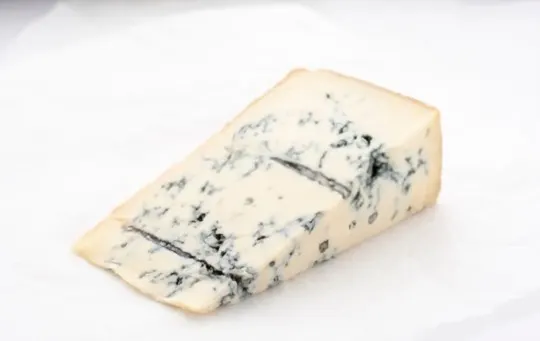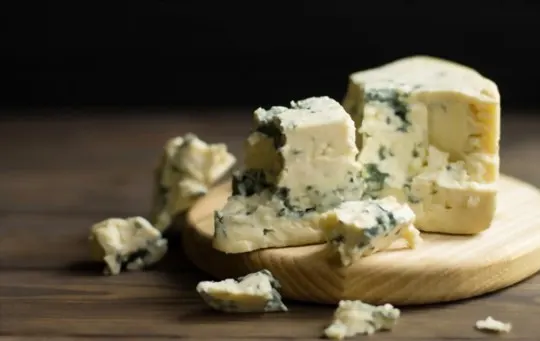Are you looking to dip your toes into the incredibly bold flavor of blue cheese?
You may be feeling a bit of trepidation; blue cheese has a unique and powerful taste, so if you’re wanting to try something new but not overwhelm your taste buds, understanding how to use blue cheese is essential.
Fortunately, there are also plenty of alternatives if you can’t get your hands on any real blue cheese.
From feta to gorgonzola, these five substitutions will help satisfy your craving for that tangy flavor.
What is Blue Cheese?

Blue cheese is a type of cheese made with cow’s milk, sheep’s milk, or goat’s milk that has an edible blue-green mold growing on the outside.
It is typically crumbly and very flavor packed.
Common varieties of blue cheese are The Roquefort from France, Stilton from England, Gorgonzola from Italy and Danish Blue from Denmark.
Blue cheese comes in a variety of shapes and sizes and its flavor can range from tangy to mild.
Many people enjoy this type of cheese for its sharp taste, creamy texture, and very distinctive aroma.
It’s important to note that blue cheeses do not actually have any blue color added in the traditional process; rather the hue comes from Penicillium Roqueforti or Penicillium Glaucum—the same type of bacteria used to create other types of blue cheeses.
Blue cheeses can be used in a number of ways in both cooking and baking recipes as well as simply being spread over crackers or bread with other accompaniments such as dried fruit spreads or fruits like apples or pears.
Blue cheese has also been known to pair wonderfully with red wines such as Cabernet Sauvignon or Syrahs (Shiraz).
Most culinary dishes utilizing blue cheeses don’t require you to use all at once; its strong flavor lends itself nicely when added for finishing notes rather than carrying the dish itself.
The 5 Best Substitutes for Blue Cheese
For those people looking to replace creamier blue cheeses, there are a few great substitutes.
Here are five of the best replacements for blue cheese that you can consider using instead.
1 – Feta Cheese

Feta cheese is a crumbly, soft white cheese made from sheep’s milk, goats milk, or a combination of both.
It has a salty, sour flavor that is similar to blue cheese.
It lacks the same sharpness of blue cheese, but it still has enough bite to substitute for it in dishes where you don’t want an overly strong taste.
Feta complements salads and appetizers well and is often used for its unique flavor.
It is also one of the most popular substitutes for blue cheese in sauces and dressings.
2 – Queso Fresco

Queso fresco is a Mexican cheese that is similar to blue cheese in flavor and crumbly texture.
It has a slightly salty, tangy flavor and can range from mild to rich and sharp.
Its texture is firm yet crumbly, making it ideal for crumbling onto salads or tacos.
Queso fresco will not give the same intense flavor as blue cheese, but it can be used in its place when the intensity of blue cheese isn’t desired.
Compared to blue cheese, queso fresco is milder in taste and does not have a pungent aroma.
3 – Gorgonzola Cheese

Gorgonzola cheese is a type of Italian blue cheese that also has a distinctive blue-green veining and creamy texture.
But as opposed to some other blue cheeses, the veins in Gorgonzola do not contain mold spores — they are created by bacteria that gives it its unique flavor.
Gorgonzola is smoother than traditional blue cheese and can be used in salads, pasta sauces and dips, or just on crackers with a sprinkling of herbs.
Its tasty flavor adds interest to any dish.
4 – Roquefort Cheese

Roquefort cheese is a French blue cheese made of sheep’s milk.
It has characteristic blue-green veins and a distinct salty, nutty flavor.
It is usually found in natural crumbly chunks and is mostly used as a topping or accompaniment to salads, sandwiches, pasta dishes and more.
Roquefort cheese contains fewer calories than most other types of blue cheese, making it a good substitute if you’re trying to watch your calorie intake.
It also has less pungent flavor notes than other blues, giving it an advantage when replacing strong-tasting blues in recipes that call for less robust flavors.
5 – Stilton Cheese

Stilton cheese is a well-known English cheese that is used as a close substitute for blue cheese in recipes.
It has a strong, pungent smell and flavor from the Penicillium Roqueforti bacteria cultures used to form its distinct deep blue veins.
This semi-soft cheese has a very crumbly texture, making it hard to spread on food and making it more suitable for crumbling on salads or mixing into sauces.
Its consistent but not overwhelming flavor makes it suitable for those who may not enjoy the distinctive taste of blue cheese as much as others.
Stilton has been granted Protected Designation of Origin status in the European Union, meaning that only certain producers across specific counties in England can call their cheese Stilton.
Conclusion
Blue cheese is a popular and flavorful variety that pairs well with many dishes.
Unfortunately, blue cheese may not be suitable for everyone’s dietary needs or taste.
Finding the right substitute for blue cheese can be tricky, but with patience you can find the perfect alternative for any recipe.
In conclusion, blue cheese is a tasty and versatile option that can make a great addition to many dishes.
However, if you have dietary restrictions or don’t care for its flavor, there are plenty of other choices available as viable replacements.
From mild feta to sharp Roquefort, you can find plenty of options to add flavor and texture to your meal.
Be sure to experiment until you find the perfect substitute that suits your tastes and dietary needs.

The 5 Best Substitutes for Blue Cheese
Ingredients
- Feta Cheese
- Queso Fresco
- Gorgonzola Cheese
- Roquefort Cheese
- Stilton Cheese
Instructions
- Choose your preferred substitute from the list of options.
- Organize all of your ingredients.
- Use the proper substitute to cook your recipes.
